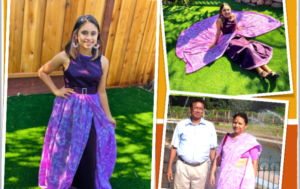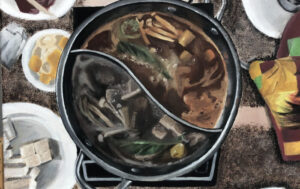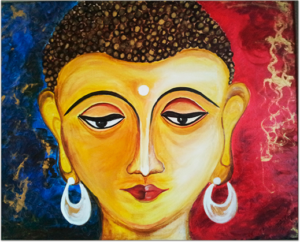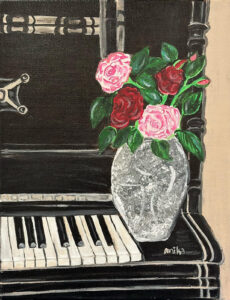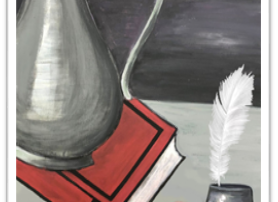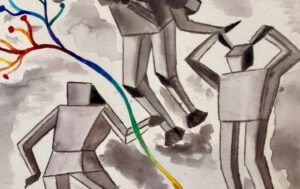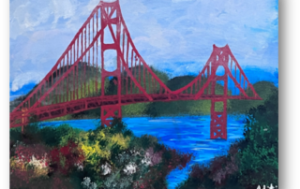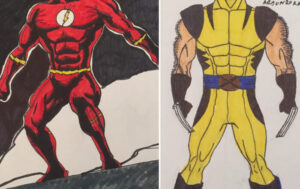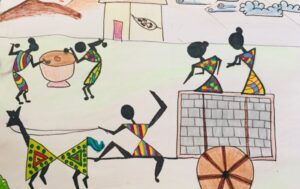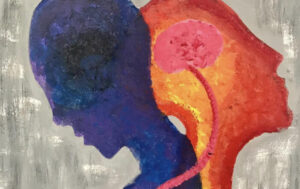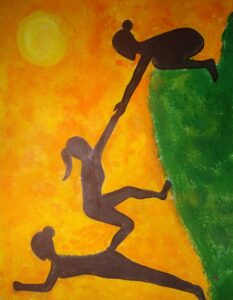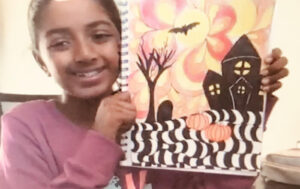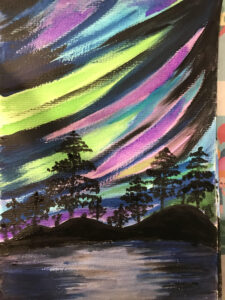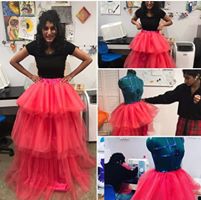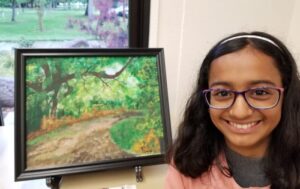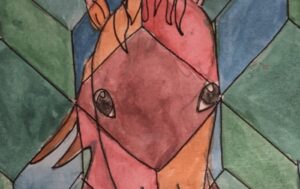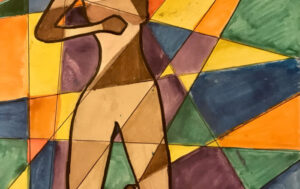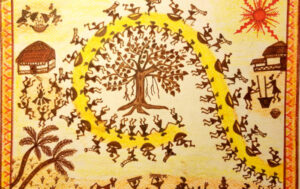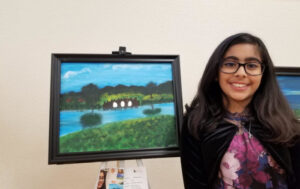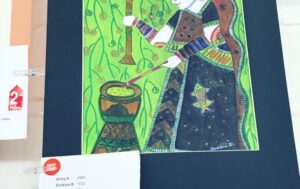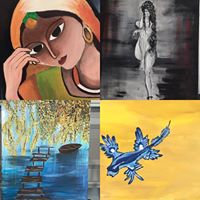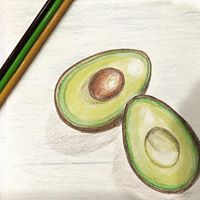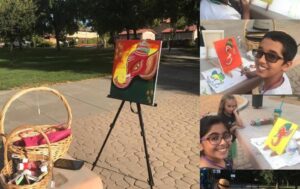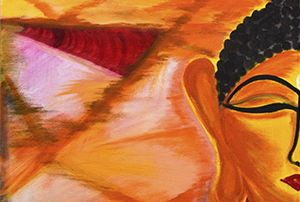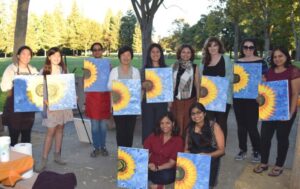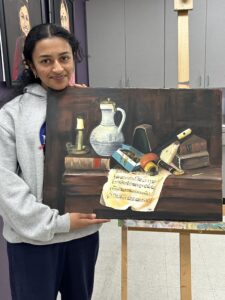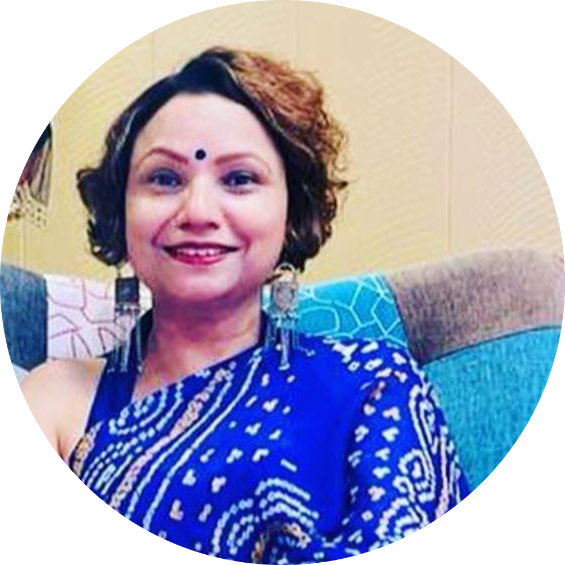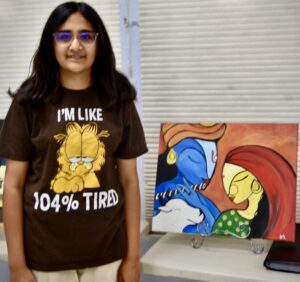
Radha-Krishna: The Colors of Divinity
By- Anika Shiroor, 8th Grade During this past summer holiday, our art school was deciding projects for all of us. I was given a watercolor landscape village project by Ms Nidhi and it did not excite me since I had drawn landscape scenes multiple times before. So I asked her if I could do a canvas painting instead and she agreed on the condition that I pick a subject related to my culture. I decided to go with the Radha Krishna theme from among the many options she gave me. I thought it was the prettiest of the lot. For this artwork, I first drew out a sketch to my liking. I altered the original piece as per my artistic vision. I discussed this with Ms Nidhi and then changed the skintone to blue and yellow to show that it was Krishna and Radha. Colour plays a significant role in art, and it holds even deeper meanings in the context of Hindu spiritual and cultural depictions. Traditionally Krishna is depicted in blue, The Color of Divinity. Blue Color distinguishes God from mere humans. the colour blue carries profound symbolic meaning. It is associated with divinity, transcendence, and the infinite. It represents the vastness of the sky, the depths of the ocean, and the boundless expanse of the universe and at the same time depicts calmness, serenity, and tranquillity. Radha is supposed to be very fair in comparison so I changed Radha’s skin color to contrast Krishna’s. I have used acrylic paints in this painting. Yellow is often associated with sunshine, warmth, and the vibrant energy of life. Radha is symbol of It represents optimism, happiness, and radiance. To make it fit into the contemporary style with abstract elements, Ms Nidhi sugggested to make the eyes long and prominent. We decided to keep the eyes in the painting closed showing clamness. The calf was not in the original picture. I added a calf because in the traditional stories, Krishna is a cow herder and adding this to the painting made it complete. Since the design was too plain, we added decorations to the garment and flute. The background is a contrast to make the characters pop. It was a difficult piece because the surfaces had to be smooth with every brush stroke. It took me around a couple of classes to do it because I kept removing features with new ones. The final painting shows us Krishna playing the flute while Radha and the calf are listening and enjoying the tune that he is playing. Growing up, I have heard many stories of the iconic duo, Radha and Krishna. They are told to be the greatest of friends. She is his greatest companion in Vrindavan and their relationship symbolizes unconditional love. Growing up with these stories have had an effect on me. Therefore this painting means a lot to me.Exploring the symbolism of colours in Krishna paintings allowed me to appreciate the thoughtfulness and intention behind the portrayal of this divine figure. I am proud of this work and would like to make more paintings on this theme in different genres.

